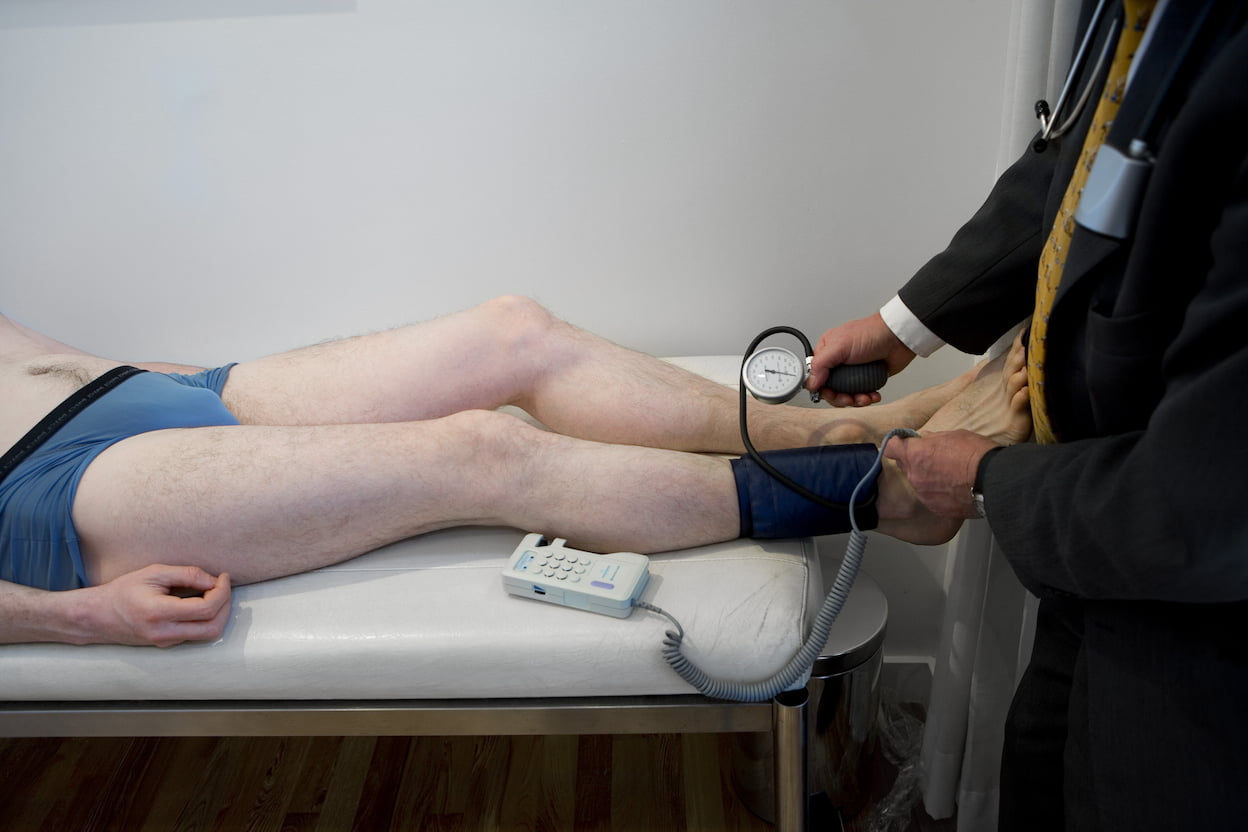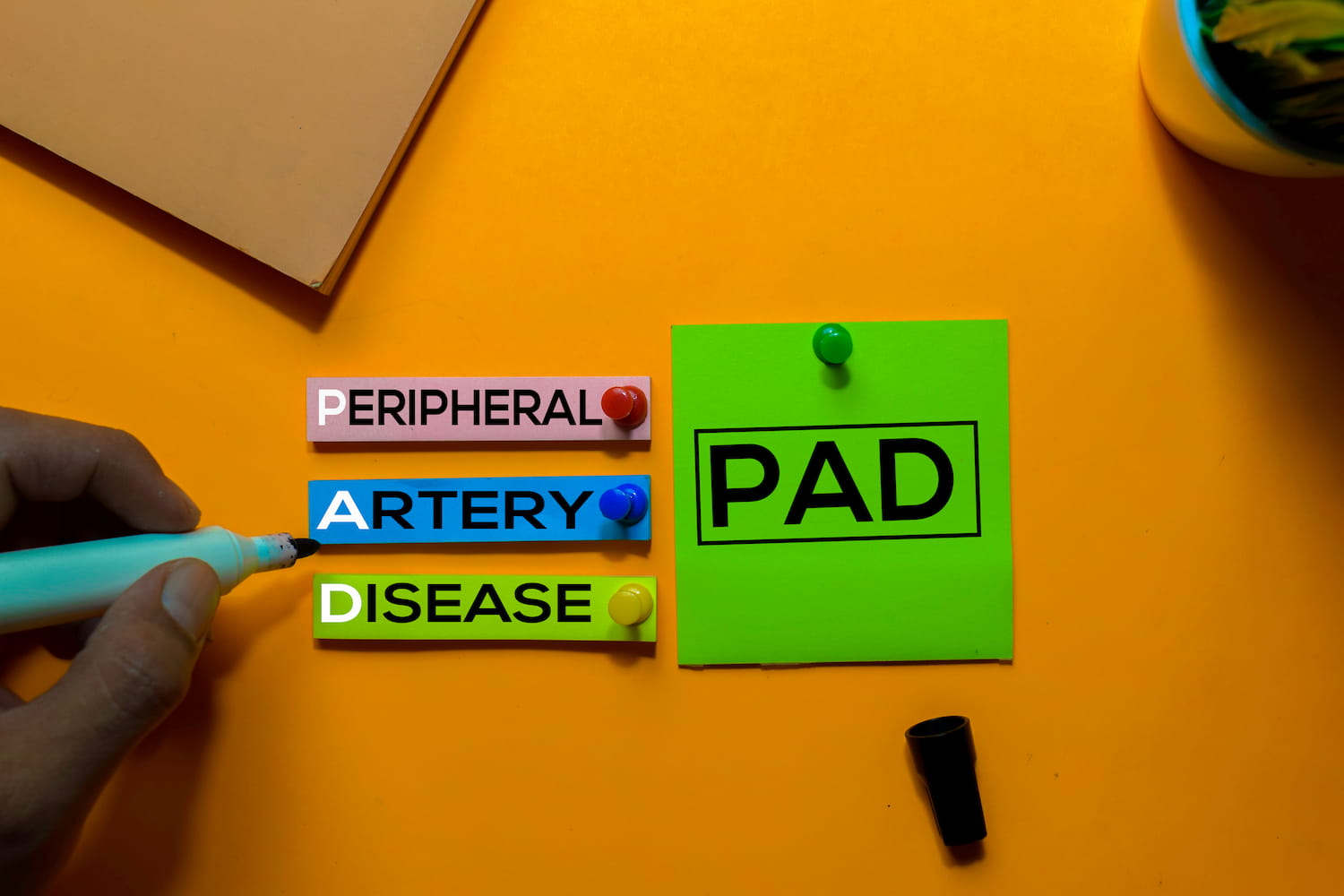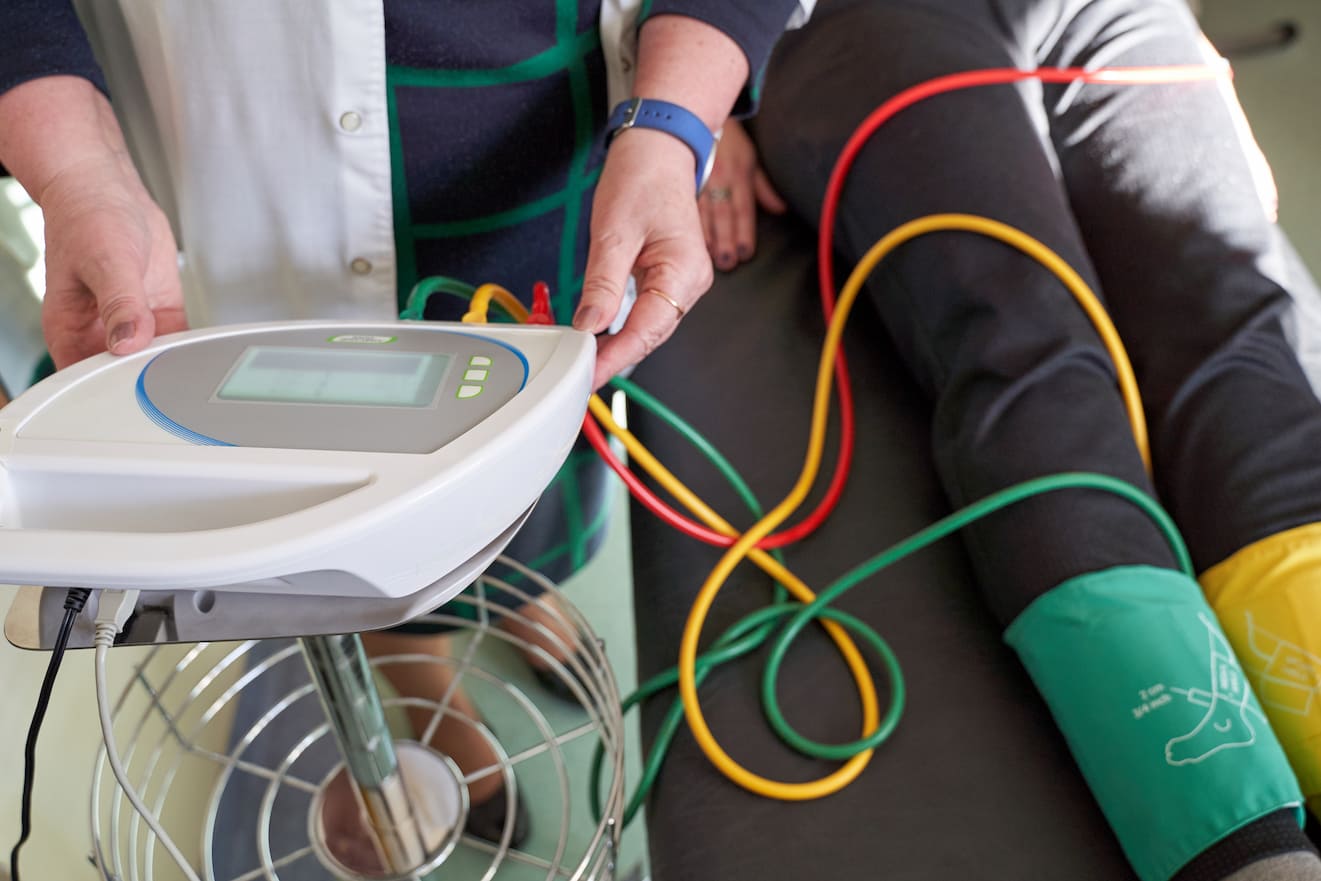Peripheral Artery Disease Treatment in Turkey
Healthy Türkiye helps you find the best peripheral artery disease treatment in Turkey at affordable prices and adopts a 360-degree service approach in all areas of health through affiliated hospitals.
- Medical Treatment
- Cardiology Treatment in Turkey
- Carotid Artery Stenting in Turkey
- Cerebrovascular Disease Treatment in Turkey
- Colour-Duplex Sonography in Turkey
- Pericarditis Treatment in Turkey
- Peripheral Artery Disease Treatment in Turkey
- Coronary Heart Disease Treatment in Turkey
- EECP Treatment in Turkey
- Congenital Heart Treatment in Turkey
- Electrophysiology Study in Turkey
- Nuclear Cardiology Test in Turkey
- Pediatric Cardiology Treatment in Turkey
- Rheumatic Heart Disease Treatment in Turkey
- Spiro-Ergometry in Turkey
- Homepage
- Medical Treatment
- Peripheral Artery Disease Treatment in Turkey

About Peripheral Artery Disease Treatment in Turkey
Peripheral artery disease treatment in Turkey focuses on reducing symptoms and preventing further progression of the condition more than surgery. In most cases, lifestyle changes, exercise, and claudication medications are enough to slow the progression or even reverse the symptoms of peripheral artery disease.
Peripheral artery disease, or PAD, refers to an arterial disease that develops outside of the heart or brain. In peripheral artery disease, the arteries that carry oxygenated blood throughout the body become narrowed or even blocked, generally as a result of atherosclerosis, or plaque. Peripheral artery disease most commonly affects the arteries in the legs, but it also can involve arteries that carry blood to the head, arms, kidneys , and gastrointestinal tract.
Many patients with PAD have mild or no symptoms; others can experience occasional claudication, or leg pain when walking. The severity of intermittent claudication varies from mild to intense. Other peripheral artery disease symptoms may include sores or ulcers that don’t heal and persistent coldness in the feet and lower legs.
When you have a blockage in your blood vessels, every step you take may become painful. At Healthy Türkiye, we’re here to help you prevent peripheral artery disease from getting worse and to reopen narrow or blocked arteries so you can get back on the right step.

PAD Treatment in Turkey
PAD (Peripheral artery disease) treatment in Turkey has two main goals, reducing your risk of cardiovascular events and improving your quality of life by easing the pain that occurs with walking. PAD is a disease in which plaque builds up in the arteries that carry blood to your head, organs, and limbs . Plaque is made up of fat, cholesterol, calcium, fibrous tissue, and other elements in the blood.
When plaque builds up in the body’s arteries, the condition is called atherosclerosis and over time, plaque can harden and narrow the arteries. This limits the flow of oxygen-rich blood to the organs and other parts of the body. PAD often affects the arteries in the legs, but it also can affect the arteries that carry blood from your heart to your head, arms, kidneys, and stomach.
Patients with peripheral arterial disease (PAD) may also hear the terms peripheral vascular disease (PVD) or peripheral vascular occlusive disease (PVOD). These diseases are more generalized, also encompassing arteries outside the heart but including those in the neck and kidneys as well as the legs. In some PAD patients, the vascular system may compensate for the reduced blood flow by forming alternative routes, called collateral vessels, that bypass the affected vasculature. In other patients, collateral vessels may not be sufficient, resulting in foot pain at rest and non-healing sores on the feet.
Diagnosis for Peripheral Artery Disease Treatment in Turkey
Undiagnosed or untreated PAD can be dangerous; it can lead to painful signs, loss of a leg, increased risk of coronary artery disease, and carotid atherosclerosis (a narrowing of the arteries that supply blood to the brain). There are a few ways PAD can be diagnosed, if the disease is suspected, the doctor will initially check the patient’s legs.
Ankle-brachial index: The most common test for peripheral artery disease, it is a test that compares the blood pressure in the ankle with the blood pressure in the arm.
CT angiography: It provides detailed cross-section images of arteries, using contrast material and a series of X-rays. This test is particularly helpful in patients with pacemakers or stents.
Ultrasound scans, angiography, and blood tests: These may also be recommended to check levels of cholesterol, homocysteine, and C-reactive protein.
Doppler ultrasound (Duplex) imaging: It is a non-invasive method that visualizes the artery with sound waves and measures the blood flow in an artery to indicate the presence of a blockage.
Magnetic Resonance Angiography (MRA): This test gives similar information to that generated by a CT scan, but without the need for X-rays.
Angiography: This is normally reserved for use in conjunction with vascular treatment procedures. During an angiogram, a contrast agent is injected into the artery, and X-rays are taken to show blood flow and to pinpoint any blockages that can be present.
Symptoms of Peripheral Arterial Disease
Because the arteries that feed the legs are narrowed by plaques, PAD can cause a lack of blood flow, creating a condition known as ischemia. Basically, ischemia occurs when the demand for oxygen is greater than the supply.
The most common symptom of this interrupted blood flow is intermittent claudication which is a cramping in the legs and buttocks that flares up when you walk and subsides when you stop. Intermittent claudication occurs in only about 40-50 % of patients with PAD. Other symptoms of PAD may include numbness or coldness in the feet and hair loss .
Among patients who do suffer pronounced symptoms such as claudication, a domino effect can develop cramping and pain while walking can cause a more sedentary lifestyle; which can lead to burning fewer calories and weight gain; which can lead to an increase in LDL cholesterol, blood pressure, and several other risk factors for heart disease.

We Care About Your Health
Healthy Türkiye provides the best for your health and comfort. You will feel privileged with us.
7/24 Quality Personal Assistance Throughout Your Journey
Customizable for You All-Inclusive Packages
Get the Right Advice for your Health
Types of Peripheral Artery Disease Treatment in Turkey
Treatments in Turkey for peripheral artery disease (PAD) include lifestyle changes, medicines, and surgery. The overall aims of treating PAD include reducing the risk of heart attack and stroke; reducing symptoms of claudication; improving mobility and overall quality of life; and preventing complications. The treatment method is based on your signs and symptoms, risk factors, and the results of physical exams and tests.
PAD treatment may slow or stop the progression of the disease and reduce the risk of complications. Without treatment, peripheral artery disease may progress, resulting in serious tissue damage in the form of sores or gangrene (tissue death) due to inadequate blood flow. In extreme cases of peripheral artery disease, also referred to as critical limb ischemia (CLI), amputation (removal) of part of the leg or foot may be necessary.
Surgical Peripheral Artery Disease Treatment in Turkey
Surgery is used for patients who have the most severe symptoms and complications. In the most extreme cases, when a leg has gangrene (when body tissue dies) and cannot be saved, amputation may be suggested. This is, however, the last resort and in many cases even when gangrene is present, amputation will be avoided. The following are surgical procedures that may be used for peripheral arterial disease treatment:
Balloon Angioplasty/Stenting
This procedure is in which your vascular surgeon inserts a balloon catheter into a narrowed portion of an artery. Expanding the balloon compresses the plaque against the artery wall and reduces the blockage, the balloon and catheter are then removed. The stretching of the artery greatly improves blood flow through the artery, therefore usually, a metal device called a stent is left in the artery to improve the chances that the blood vessel will stay open.
Bypass Grafting
It is a surgical procedure to redirect blood flow around an area of blockage. This procedure creates an alternate channel for blood flow, bypassing an obstructed or damaged vessel. The graft may come from a healthy section of the patient’s own vein, or synthetic material may be used.
Cryoplasty, or Cryo-balloon Angioplasty
This procedure is similar to angioplasty in which a vascular surgeon inserts a balloon catheter into a blocked artery to repair an obstruction within the vessel. Once the balloon catheter reaches the site of the blockage, it is filled with liquid nitrous oxide, which immediately evaporates into a gas. The gas causes the balloon to inflate and freeze the surrounding tissue, promoting the dilation or opening of the artery while minimizing the potential for the growth of new scar tissue, and reducing the likelihood that the blockage in the treated location will reoccur.
Percutaneous or Laser Atherectomy
This procedure is in which a vascular surgeon inserts a specialized catheter into a blocked artery to remove a buildup of atherosclerotic plaque from within the vessel. The catheter contains a sharp rotating blade, grinding bit, or laser filament, as well as a collection system that allows the surgeon to remove the plaque from the wall of the vessel and collect or suction any resulting debris.
Non-surgical Peripheral Artery Disease Treatment in Turkey
Lifestyle Changes for Peripheral Artery Disease Treatment
Routine physical activity can improve peripheral artery disease symptoms and also lower many risk factors for atherosclerosis, including LDL cholesterol, high blood pressure, and excess weight. 30-45 minutes of treadmill or track walking in an exercise-rest-exercise pattern 3-4 times a week is an important treatment way. Supervised exercise programs are superior to unsupervised programs.
This exercise can increase symptom-free walking distance and improve quality of life. Routine physical activity can improve PAD symptoms and lower many risk factors for atherosclerosis, including LDL cholesterol, high blood pressure, and excess weight. Exercise can improve the distances you can comfortably walk. Besides, a heart-healthy diet low in saturated fat helps control blood pressure and cholesterol levels.
Patients are recommended to keep their legs below heart level. For pain relief especially at night, the head of the bed can be elevated about 10 to 15 cm to improve blood flow to the feet.
Smoking damages the arteries and increases the risk of peripheral artery disease (PAD). If you have peripheral artery disease, smoking can make the condition worse.
Preventive foot care is crucial, specifically for patients with diabetes. This care includes daily foot inspection for injuries and lesions; treatment of calluses and corns by a podiatrist; daily washing of the feet in lukewarm water with soap, followed by gentle, thorough drying; and avoidance of thermal, chemical , and mechanical injury, especially that due to poorly fitting footwear.
Medications for Peripheral Artery Disease Treatment
If peripheral artery disease (PAD) is causing some symptoms, your provider may prescribe medicine. Medications for peripheral artery disease may include:
Cholesterol medications: Drugs called statins are commonly prescribed for people with peripheral artery disease. Statins use to lower bad cholesterol and reduce plaque buildup in the arteries. These drugs also lower the risk of heart attacks and strokes .
Blood pressure medications: Uncontrolled high blood pressure can make arteries hard. These drugs can slow the flow of blood. Ask your doctor what blood pressure goal is best for you. If you have high blood pressure, your doctor should prescribe medications to lower it.
Blood sugar medications: If you have diabetes, controlling your blood sugar levels should become even more important.
Prevent blood clots medications: Peripheral artery disease is related to reduced blood flow to the limbs, therefore, medicines may be given to improve blood flow. Aspirin or another medication, like clopidogrel (Plavix), may be used to prevent blood clotting.
Leg pain medications: The medication cilostazol thins the blood and widens blood vessels and increases blood flow to the limbs. The drug specifically helps treat leg pain in patients who have peripheral artery disease. An alternative medication is pentoxifylline. Side effects are rare with this medication, but it usually doesn’t work as well as cilostazol.

2026 Cost of Peripheral Artery Disease Treatment in Turkey
All types of medical attention like peripheral artery disease treatment are very affordable in Turkey. Many factors are also included in determining the cost of peripheral artery disease treatment in Turkey. Your process with Healthy Türkiye will last from the time you decide to have a PAD treatment in Turkey until the time you are fully recovered even if you are back home. The exact peripheral artery disease treatment procedure cost in Turkey depends on the type of operation involved.
The cost of peripheral artery disease treatment in Turkey does not demonstrate many variations in 2026. Compared to costs in developed countries like the United States or the UK, peripheral artery disease treatment costs in Turkey are relatively low. So, it’s no wonder patients from across the world visit Turkey for peripheral artery disease treatment procedures. However, the price is not the only factor affecting choices. We suggest looking for hospitals that are safe and have PAD treatment reviews on Google. When people decide to seek medical help for peripheral artery disease treatment, they will not only have low-cost procedures in Turkey, but also the safest and best treatment.
At clinics or hospitals contracted with Healthy Türkiye, patients will receive the best peripheral artery disease treatment from specialist doctors in Turkey at affordable rates. Healthy Türkiye teams to provide medical attention to peripheral artery disease treatment procedures and high-quality treatment to patients at a minimum cost. When you contact Healthy Türkiye assistants, you can get free information about the cost of peripheral artery disease treatment in Turkey and what this cost covers.
The cost of a PAD treatment in the UK is between £8.000-£10.000.
The cost of a PAD treatment in the USA is between $10.000-$25.000.
The cost of a PAD treatment in Turkey is between $2.000-$4.000.
Price of Peripheral Artery Disease Treatment in the UK?
Price of Peripheral Artery Disease Treatment in the USA?
Price of Peripheral Artery Disease Treatment in Turkey?
Why Is Peripheral Artery Disease Treatment Cheaper in Turkey?
One of the main considerations before traveling abroad for peripheral artery disease treatment is the cost-effectiveness of the whole process. Many patients think that when they add flight tickets and hotel expenses to their peripheral artery disease treatment costs, it will become very expensive to travel, which is not true. Contrary to popular belief, round-trip flight tickets to Turkey for PAD treatment can be booked very affordably.
In this case, assuming you are staying in Turkey for your peripheral artery disease treatment, your total travel expense of flight tickets and accommodation will only cost less than any other developed country, which is nothing compared to the amount that you are saving. The question “why is peripheral artery disease treatment cheaper in Turkey?” is so common between patients or people simply curious about getting their medical treatment in Turkey. When it comes to peripheral artery disease treatment prices in Turkey, there are 3 factors that allow cheaper prices:
The currency exchange is favorable for whoever looking for peripheral artery disease treatment has a euro, dollar, or pound;
The lower cost of living and cheaper overall medical expenses such as peripheral artery disease treatment;
For peripheral artery disease treatment, incentives are given by the Turkish Government to medical clinics working with international clients;
All these factors allow for cheaper peripheral artery disease treatment prices, but let’s be clear, these prices are cheaper for people with strong currencies (as we said, euro, dollar, Canadian dollar, pound, etc).
Every year, thousands of patients from all over the world come to Turkey to get peripheral artery disease treatment. The success of the healthcare system has increased in recent years, especially for PAD treatment. It’s easy to find well-educated and English-speaking medical professionals in Turkey for all kinds of medical treatment such as peripheral artery disease treatment

Why Choose Turkey for Peripheral Artery Disease Treatment?
Turkey is a common choice among international patients seeking advanced peripheral artery disease treatment. Turkey’s health procedures are safe and effective operations with a high success rate like PAD treatment. The increasing demand for high-quality peripheral artery disease treatment at affordable prices has made Turkey a popular medical travel destination. In Turkey, peripheral artery disease treatment is performed by highly experienced and trained doctors with the most advanced technology in the world. PAD treatment is done in Istanbul, Ankara, Antalya, and other major cities. The reasons for choosing peripheral artery disease treatment in Turkey are as follows:
High-quality hospitals: Joint Commission International (JCI) accredited hospitals have dedicated peripheral artery disease treatment units that are specially designed for patients. International and national strict protocols provide effective and successful peripheral artery disease treatment for patients in Turkey.
Qualified experts: The expert teams include nurses and specialist doctors, together to carry out peripheral artery disease treatment according to the patient’s needs. All the included doctors are highly experienced in performing PAD treatment.
Affordable price: The cost of peripheral artery disease treatment in Turkey is affordable compared to Europe, the USA, the UK, Singapore, Australia, etc.
The high success rate: Highly experienced specialists, the best available technology, and stringently followed safety guidelines for post-operative care of the patient, resulting in a high success rate for peripheral artery disease treatment in Turkey.
Is Peripheral Artery Disease Treatment Safe in Turkey?
Did you know Turkey is one of the most visited destinations for peripheral artery disease treatment in the world? It is ranked one of the most visited tourist destinations for peripheral artery disease treatment. Over the years it has also come to be a very popular medical tourism destination too with many tourists coming in for PAD treatment. There are so many reasons why Turkey stands out as a leading destination for peripheral artery disease treatment. Because Turkey is both safe and easy to travel to too with a regional airport hub and flight connections to pretty much everywhere, it is preferred for peripheral artery disease treatment.
The best hospitals in Turkey have experienced medical staff and specialists who have performed thousands of medical services such as peripheral artery disease treatment. All procedures and coordination related to PAD treatment are controlled by the Ministry of Health in accordance with the law. Over many years, the greatest progress in medicine has been observed in the field of peripheral artery disease treatment. Turkey is known among foreign patients for its great opportunities in the area of peripheral artery disease treatment.
To emphasize, besides the price itself, the key factor in selecting a destination for peripheral artery disease treatment is certainly the standard of medical services, the hospital staff’s high expertise, hospitality, and the safety of the country.
All-Inclusive Packages for Peripheral Artery Disease Treatment in Turkey
Healthy Türkiye offers all-inclusive packages for peripheral artery disease treatment in Turkey at much lower prices. Extremely professional and experienced doctors and technicians carry out high-quality peripheral artery disease treatment. The cost of PAD treatment in European countries can be quite expensive, especially in the UK. Healthy Türkiye provides cheap all-inclusive packages for a long and short stay of peripheral artery disease treatment in Turkey. Because of many factors, we can provide you with many opportunities for your peripheral artery disease treatment in Turkey.
The price of peripheral artery disease treatment differs from other countries due to medical fees, staff labor prices, exchange rates, and market competition. You can save much more on PAD treatment compared to other countries in Turkey. When you purchase the peripheral artery disease treatment all-inclusive package with Healthy Türkiye our healthcare team will present hotels for you to choose from. In peripheral artery disease treatment travel, you will have the price of your stay included in the all-inclusive package cost.
In Turkey, when you purchase peripheral artery disease treatment all-inclusive packages through Healthy Türkiye, you will always receive VIP transfers. These are provided by Healthy Türkiye, which is contracted with highly qualified hospitals for peripheral artery disease treatment in Turkey. Healthy Türkiye teams will organize everything about cardiology treatment in Turkey for you and have you picked up from the airport and safely brought to your accommodation.
Once settled in the hotel, you will be transferred to and from the clinic or hospital for peripheral artery disease treatment. After your PAD treatment has been successfully completed, the transfer team will return you to the airport in time for your flight home. In Turkey, all packages of peripheral artery disease treatment can be arranged upon request, which relaxes the minds of our patients.
The Best Hospitals in Turkey for Peripheral Artery Disease Treatment
The best hospitals in Turkey for peripheral artery disease treatment are Healthy Türkiye, Memorial Hospital, Acıbadem International Hospital, and Medicalpark Hospital. These hospitals attract patients from all over the world seeking peripheral artery disease treatment due to their affordable prices and high success rates.
Best Doctors and Surgeons in Turkey for Peripheral Artery Disease Treatment
The best doctors and surgeons in Turkey for peripheral artery disease treatment are highly skilled professionals who offer specialized care and advanced procedures. With their expertise and state-of-the-art techniques, these specialists ensure that patients receive high-quality peripheral artery disease treatment and achieve optimal health results.

Frequently Asked Questions
Treatments for peripheral artery disease include lifestyle changes and sometimes, medication and surgery. Lifestyle changes can help improve signs, especially early in the course of peripheral artery disease. If you smoke, quitting is the single most important thing you can do to reduce the risk of complications.
Depending on the treatment you received, you can spend one night or several in the hospital. You may only need a few days to recover from an atherectomy, but you'll need a week after angioplasty. It can take 5-8 weeks to recover completely from peripheral artery bypass surgery
The main risk factor for peripheral artery disease is smoking. Other risk factors include older age and diseases such as diabetes, high blood cholesterol, high blood pressure, heart disease, and stroke.
Tingling in your foot or toes can also awaken you. Hanging your legs over the side of your bed helps because it forces blood to flow into your lower limbs. Sleep apnea, a condition linked to peripheral artery disease, disrupts your sleep.
There's no cure for peripheral arterial disease, but lifestyle changes and medicine can help reduce the symptoms. Some treatments can also help reduce your risk of developing other types of cardiovascular disease (CVD), such as coronary heart disease.
The symptoms of peripheral artery disease usually develop slowly, over time. If your symptoms develop quickly or get suddenly worse, it could be a sign of a severe problem requiring immediate treatment.
It is permanent, there is just a 2-3 % risk of narrowing coming back, and if that happens it is usually within 6-9 months. If it does, it can potentially be treated with another stent. You may experience narrowings in other arteries, which again can often be treated with further stents.
PAD can affect the arteries of the heart, brain, abdomen, arms, and legs, however, the legs are most commonly affected.
The most common symptom of peripheral artery disease is painful cramping in the leg or hip, particularly when walking.
